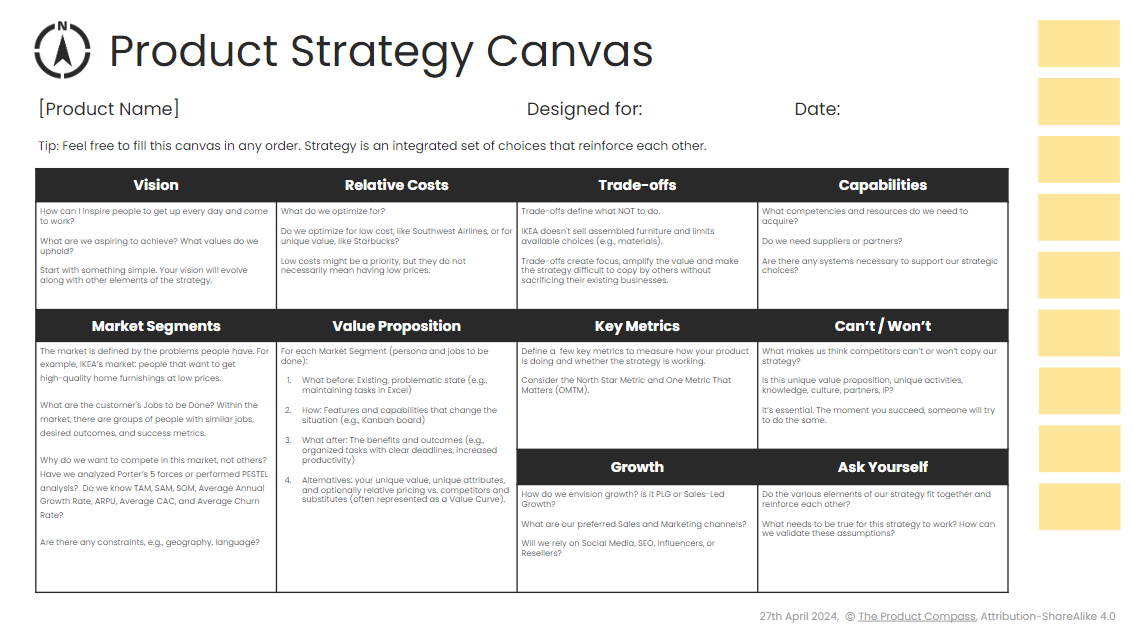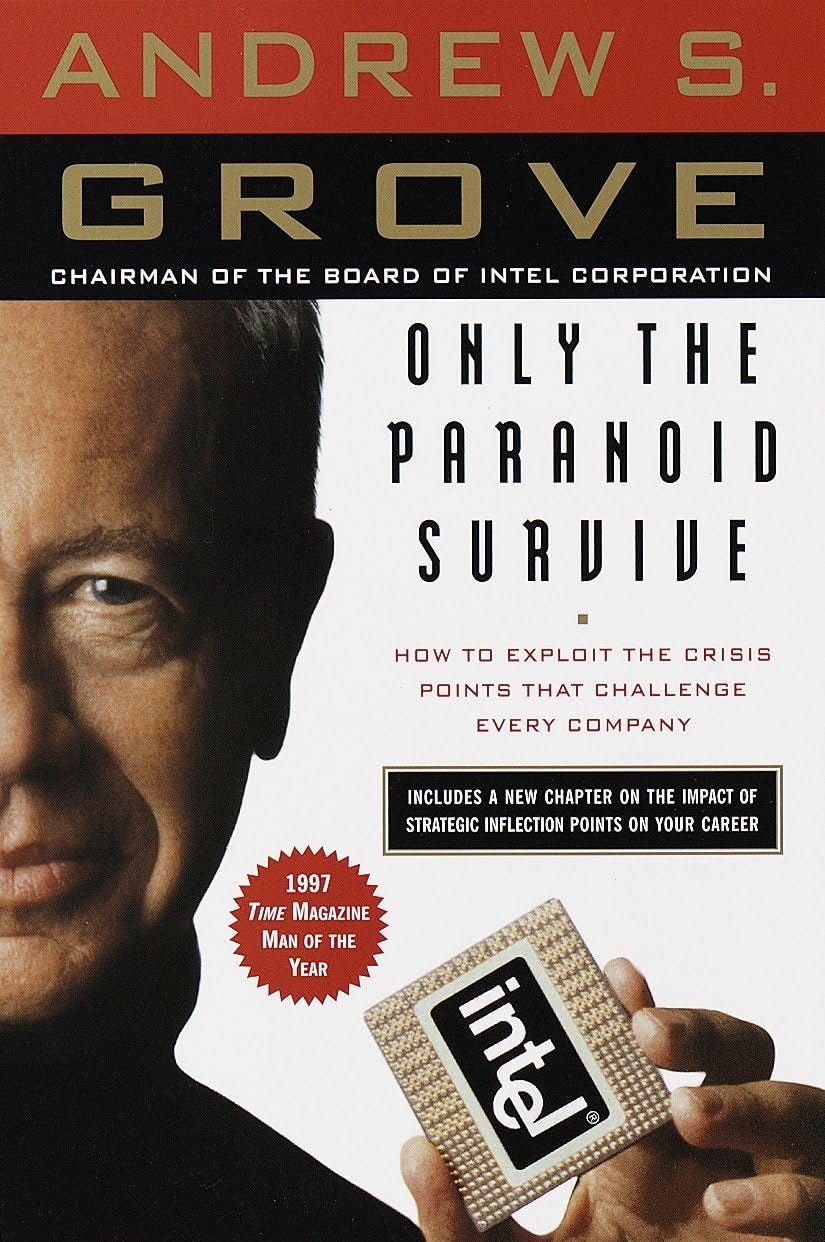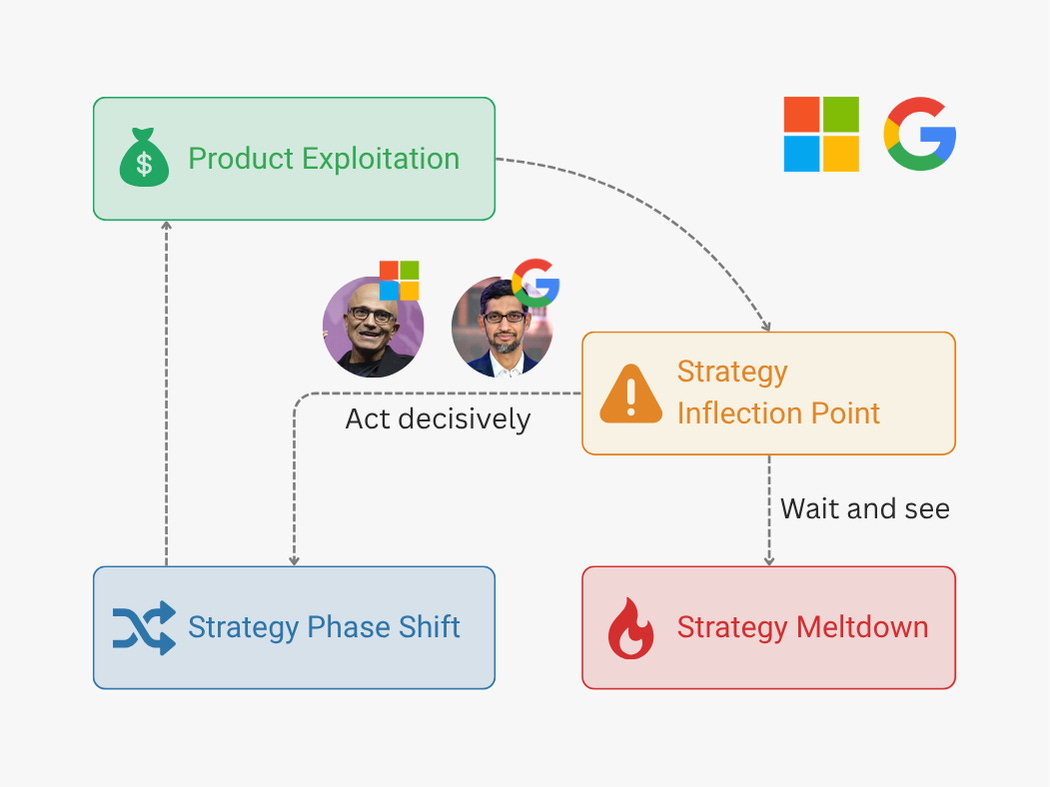Strategic Inflection Point. Can You Shift Fast Enough?
How to avoid Strategy Meltdown. Lessons from Microsoft and Google. Don’t get caught off guard.
Hey, Paweł here. Welcome to the freemium edition of The Product Compass newsletter.
Every week, I share actionable tips, resources, and step-by-step guides for PMs.
Consider subscribing or upgrading your account for the full experience:
Strategy is one of the most critical areas for every Product Manager. AI PM or not.
There’s a clear trend: IC (Individual Contributor) PMs are now expected to co-create strategy bottom-up and drive business outcomes.
Creating value for the customers within fixed boundaries is no longer enough.
Unfortunately, the term “strategy” is commonly misunderstood.
I love the work of Roger Martin who emphasizes that strategy:
Is not a plan, ambition, goal, or action.
Is about making choices that allow you to win in the market you choose.
Involves customers you can’t control.
Has a theory on how to persuade them to do what you want.
Is singular, even though it has many levels. Marketing strategy, GTM strategy, product strategy, and now AI strategy (sigh). They must all work together and reinforce each other.
In the past, I’ve covered many aspects of strategy1, including the Product Strategy Canvas (#1 in Google), Google Maps, Netflix, and OpenAI case studies, and the From Strategy to Objectives Masterclass.

In this issue, I want to focus on one critical aspect I haven’t explored enough: Strategic Inflection Point. It initializes a period that can be chaotic and painful, especially if mismanaged.
We’ll cover:
Why We Must Respect Our Strategic Choices
How Can Strategy Evolve
The Dangers of Strategic Inflection Points
Strategy Phase Shift
Case Study 1: Microsoft Mobile First, Cloud First
Case Study 2: Google AI AI AI
🔒How to Mitigate the Risks of Inflection Points
🔒Conclusion
Let’s dive in.
1. Why We Must Respect Our Strategic Choices
I like telling the story of Mike. He wants to be the best, but he’s struggling to make a choice and keeps changing dreams like TV channels.
On Monday he decided to become a race driver, but he didn’t make a career, so the next day he enrolled in an AI coding course on Tuesday.
The last time we spoke I said: “Listen, buddy. You need to grow up. Make a choice, put in some effort, and be persistent. That’s the only way to win.”
While Mike's story might seem absurd, that's precisely what many companies do.
The two most common scenarios are:
Stakeholders (Sales, Marketing, Success) pull the product in different directions.
Customers have different needs, and you try to satisfy everyone.
Trying to satisfy everyone and grasp every short-term opportunity is the surest way to be best at nothing.
And while not everyone agrees with my phrasing, I like saying that those companies have no strategy2.
Of course, for startups, it’s natural to explore and pivot multiple times before defining their ICP (Ideal Customer Profile) and the initial value proposition. But over time, as they grow and reach an initial product-market fit, their strategy should become more focused.
Wherever you are on the product journey, you need to communicate and respect your strategic choices. That’s the only way to win at something and guide everyone in the organization to make better decisions without micromanagement.
Does that mean the strategy should freeze?
On the contrary.
2. How Can Strategy Evolve
A static strategy could lead to missed opportunities and being unable to adapt to new market conditions. As with everything in product, continuous learning and adaptation are essential.
Two common ways to evolve:
Option 1: Address new needs within existing segments
Examples:
In early 2025, we developed “AI chat with document” and “eSignature” features at Ideals (VDR). Both addressed our existing users, tackling their jobs-to-be-done.
In February 2025, Lovable launched Visual Edits to help existing users adjust UI more effectively without prompting. It’s now the core part of their value proposition.
Option 2: Enter new market segments
Examples:
At the start of 2025, I researched the fundraising use case trying to understand specific needs of startups in the early phase, different from M&A. Fundraising has already become part of Ideals VDR value proposition.
Between 1998 and 2000 Amazon expanded from selling books to “everything.”
…
And this should go without saying:
You need to listen to your customers. But you don’t change strategic choices every time a customer threatens to churn. Your product might not be for them. And that’s okay.
But what if evolution isn’t enough?
Welcome to Strategic Inflection Point.
3. The Dangers of Strategic Inflection Points
In Only the Paranoid Survive, Intel's Andy Grove introduced the concept of a Strategic Inflection Point.
This is the moment when you realize your old strategic choices stop working, often triggered by a disruptive event or breakthrough technology.
These moments can catch even strong companies off guard and force sudden, painful re-evaluation.
At this point, gradual evolution isn’t just dangerous. It might lead to a Strategy Meltdown, when nothing can be done to fix the situation.
Luckily, some companies manage to change the direction rapidly.
I call this Strategy Phase Shift.
4. Strategy Phase Shift Case Studies
Let’s look at two case studies:
Case Study 1: Microsoft Mobile First, Cloud First
The rise of mobile (iPhone, 2007) and cloud computing (AWS, 2010) was a near-death experience for Microsoft. Their PC-centric strategy no longer worked. And Windows Mobile failed (2010).
Only in 2014, after becoming CEO Satya Nadella responded with a bold “Mobile First, Cloud First” strategy. It meant entering new markets, redefining Microsoft’s value proposition, leveraging the company’s existing strengths, and setting a clear direction.
An epic interview:
Working closely with Microsoft, I observed the huge pressure that all Microsoft sales representatives and partners continued to experience even in 2020. You were either selling cloud, or your results and initiatives didn’t count.
Case Study 2: Google AI AI AI
The release of ChatGPT in 2023 caught Google off guard. Despite having foundational research and internal demos, the company wasn’t ready with a productized response. Their “10x over launch fast” culture failed to keep pace with a faster, messier wave of innovation.
What followed was a strategic pivot. Google shifted from a cautious, research-led approach to an increasingly faster adaptation: integrating Gemini into Search (with Google Ads being the key revenue driver), Docs, Gmail, Android, and launching new standalone products (e.g., NotebookLM, Firebase Studio).
Google’s strategy phase shift is still in progress. But the focus is clear. At I/O 2024 Sundar Pichai famously emphasized “AI” around 121 times:
Why “Strategy Phase Shift” Not “Pivot”?
We use “pivot” when discussing startups.
But Microsoft and Google weren’t making small pivots. These were tectonic shifts in direction, not just iterations.
Some suggested “Strategy Reset” or “Strategy Reinvent,” but neither company reinvented everything. They adapted aggressively while keeping their core identity and leveraging existing strengths (e.g., Microsoft’s distribution channels, Google’s Search).
…
Can we prevent Strategy Inflection Points?
No. But there’s a lot we can do to mitigate the risk.
5. How to Mitigate the Risks of Inflection Points
It’s impossible to "prevent" the external triggers such as a new technology or a black swan event. But we can mitigate their impact.
Three key tactics with tools and templates:
Keep reading with a 7-day free trial
Subscribe to The Product Compass to keep reading this post and get 7 days of free access to the full post archives.





